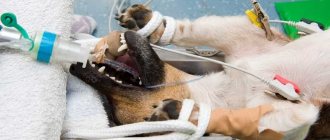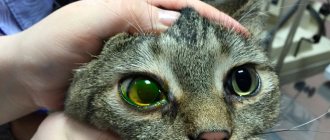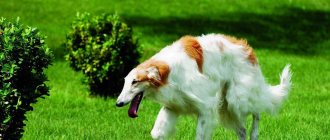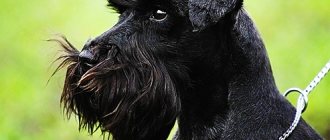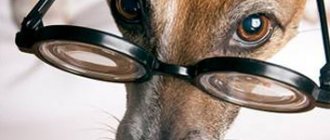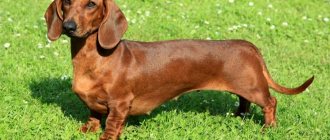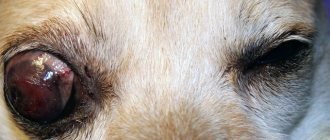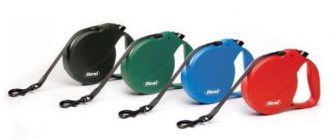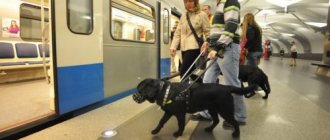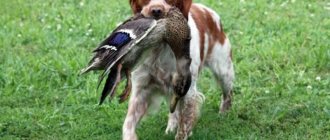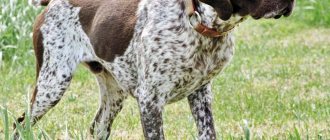Brachycephaly is an anatomical term translated from Latin as “wide and short head”, often used in connection with the structural features of the human skull. However, there are also brachycephalic dogs, the list of breeds of which is quite extensive. Likewise, the Japanese Chin is brachycephalic. People who have connected their lives with such pets are strongly advised to familiarize themselves with the peculiarities of their health, as well as the rules for raising and keeping them.
Brachycephalic dogs: a reminder to owners for all occasions People have been breeding animals for centuries, modifying and strengthening certain characteristics, as a result of which humanity has so many breeds at this time. The world knows naked dogs and those “dressed” from head to toe, giants and little ones that fit in the palm of your hand. All breeds have their own physiological characteristics, but representatives of the brachycephalic group, like no other, need special care.
Who are brachycephalics
Dogs belonging to brachycephalic breeds are distinguished by a small flattened head, due to which this category of animals got its name. Also, brachycephalic dog breeds, the list of which is given below, differ in a number of individual specific features.
English bulldog
It has a calm character, making it an excellent companion dog. Bulldogs are rarely guards, but with proper training they can guard the territory and carry out instructions from the owner.
Note! Do not be deceived by the obesity of bulldogs: even adults are distinguished by their mobility and activity.
Boston Terrier
This decorative dog was bred by crossing English bulldogs and English terriers. They are distinguished by a calm, flexible character, friendly and non-conflicting. However, thanks to their territorial instinct, they can act as guards.
Boston Terrier
French Bulldog
Pets are smart and friendly, they love to be in the company of people, making them perfect for those who like to lead a calm and measured lifestyle. Representatives of the breed are distinguished by a strong, muscular body. At an early age they can be overly active, but this goes away over time. They love children.
French Bulldog
Shih Tzu
Lively and cheerful. Translated from Chinese, the name means “lion dog”. They easily find a common language not only with the owner and his family, but also with other dogs living with them in the same territory. They are easy to train, but due to impaired thermoregulation they can get heatstroke in high temperature conditions.
Shih Tzu
Cavalier King Charles Spaniel
Dogs of this breed rarely serve as guards, but they are very fond of children. They are very sociable and active.
Cavalier King Charles Spaniel
American Bulldog
Companion and excellent guard. This dog is distinguished by the fact that in difficult situations it does not panic, but quickly makes the right decision and rushes to the owner’s aid. And such qualities as caring and kindness allow bulldogs to be trusted even in supervising children.
American Bulldog
Pekingese
Pekingese are distinguished by high sensitivity and vulnerability. If other animals live in the house besides them, they may become jealous, competing for attention. But at the same time they are smart, trainable and loyal. The typical Pekingese skull is small.
Pekingese
Brussels Griffon
This decorative dog easily gets along in the same territory with other animals, but is extremely selective towards people. Being attached to one person, she behaves warily with others. Those whose family has children should also treat this breed with caution.
Pug
Kind and friendly dogs are easy to train, picking up commands on the fly. They very easily get used to new conditions and adapt to the rhythm of human life, but they have a hard time withstanding the heat.
German boxer
Excellent guards, loyal to their owners and suspicious of others. They love children, enjoy playing and spending time with them. They are sociable, love affection and attention.
Dogue de Bordeaux
Good health and endurance allow them to be both companions and guards. Sensitive hearing and sense of smell help them sense the approach of strangers from afar. They are quite easy to train.
What are brachycephalic breed dogs?
Flat-faced dogs were specially bred by people through painstaking selection. According to one version, these dogs were intended for fighting with bulls, which they grabbed by the weakest and most unprotected place - the nose. But so that their own nose could breathe, it was removed closer to the skull. According to another much less militant theory, small short-faced dogs with flat noses resembled human babies in their appearance. Probably, when looking at them, the owners received aesthetic pleasure.
Simultaneously with the shortening of the muzzle, the animal's respiratory tract also underwent changes . A brachycephalic dog has narrowed nostrils, a disproportionately elongated soft palate with a protruding epiglottis that interferes with breathing, shortened or deformed (as if crushed and folded into an accordion) lacrimal canals, as well as various congenital pathologies of the trachea and larynx. All this makes even simple calm breathing quite difficult.
Along with the shortening of the muzzle, significant changes occurred in the dog’s nasal cavity.
When the ambient temperature changes (especially in summer, when it is hot), during emotional (stress, fear, intense joy, pain, etc.) and physical stress, brachycephalic dogs find it difficult to breathe. Severe shortness of breath begins, inhalations and exhalations are accompanied by whistling and wheezing, and there is a bubbling in the throat - this is how brachycephalic syndrome manifests itself. Respiratory activity becomes insufficient, therefore, little oxygen enters the body, oxygen starvation occurs and is often followed by fainting (loss of consciousness).
Subsequently, heart failure develops. Obstruction (obstruction) of the respiratory tract and pulmonary edema are often diagnosed, which lead to sudden death due to suffocation. Surgery to widen the nostrils and remove excess tissue from the roof of the mouth, as well as cutting out excess folds of the larynx, makes life much easier for your pet.
Brachycephalic dogs have difficulty breathing
In addition to breathing problems, brachycephalics have the following pathologies:
- Impaired outflow of tear fluid (excessive or insufficient hydration of the eyeball).
- Dental diseases. An incorrect bite provokes the formation of dental plaque, as well as inflammation of the gums (gingivitis).
- Dermatological diseases. Dirt and sebaceous deposits accumulate in the skin folds on the head; they provide a breeding ground for various fungi and bacteria.
- Problems with self-thermoregulation. Such dogs do not tolerate heat well . Their body temperature is often elevated.
- Allergic manifestations (dermatitis). Many brachycephalic dogs are allergic (to food, pollen, household chemicals, etc.).
- Excess body weight. Short-faced dogs are often prone to obesity.
Video: brachycephalic dogs
Why do brachycephalic dogs have health problems?
Despite the fact that the peculiar shape of the muzzle makes dogs very pretty, the altered shape of the skull becomes the cause of the development of many diseases. That is why, when getting a pet with such a feature, owners should take a number of aspects of its health seriously.
Reverse sneezing
It is observed due to the fact that the elongated soft palate and violation of the laryngeal vault provoke irritation of the mucous membrane. There is no confirmed evidence that the pathology is a hereditary predisposition. During attacks, the dog stretches its neck, spreads its front legs wide and makes sounds vaguely reminiscent of grunting.
Important! This phenomenon in itself does not pose a significant threat to the life and health of the pet. But if the attacks are prolonged, you should consult a veterinarian.
The special structure of the muzzle of a brachycephalic dog can cause many problems.
Tracheal collapse
Occurs due to subsidence of the cartilaginous part of the trachea, which causes the organ to deform, narrow, and change its natural position. The tracheal membrane, which is normally rigid, begins to sag during inhalation and bulge during exhalation. Air flow is disrupted, breathing becomes more difficult. There are four stages of the disease - from partial to complete closure of the trachea. You can alleviate the animal’s condition in the early stages with the help of a properly selected harness and dosed physical activity. In later stages, surgery may be required.
Patella luxation
It is a hereditary disease. In some cases it goes away on its own; in advanced forms it requires treatment.
Eye diseases
These include dry eye, entropion, and infectious diseases.
Hip dysplasia
Often occurs as a complication due to excess weight. In this case, the joint develops incorrectly and is noticeably deformed.
Problems with thermoregulation
Due to the fact that brachycephalic dogs do not sweat through their skin, the main mechanism of thermoregulation is breathing. But due to the short length of the nasal passages and neck, the air entering the lungs from the outside does not have time to cool properly.
Allergy
The problem manifests itself in the form of painful itching, accompanied by redness of the eyes, copious discharge from the eyes, mouth and nose, purulent inflammation with an unpleasant odor, vomiting and diarrhea. If symptoms occur, contact your veterinarian immediately.
Important! Food from the owner's table is not always suitable for dogs. Dairy products, cereals, and soy are strong allergens. Low quality dry food is considered an additional risk factor.
Obesity
Most brachycephalic dogs are predisposed to being overweight. In addition to stress on the joints, it often results in stress on the respiratory system and heart.
Maintenance and care
In addition to ensuring sufficient nutrition, it is important for the owner to constantly monitor the breathing of his animal. When enduring physical or thermal stress, the animal will easily become short of breath and may faint, which will ultimately lead to heart failure if left untreated.
It often happens that a dog develops internal pathology associated with the jaw or respiratory system. If there is any uncharacteristic sound from the bowels of the animal or excessive wheezing, you should consult a veterinarian. The owner should constantly inspect his pet's nostrils. If they are closed or not expanded enough, then this is also a good reason to consult a specialist.
You need to pay great attention to the choice of collar.
Many collars put too much pressure on dogs' respiratory organs, causing them to cough or wheeze when using the device. A soft harness may be an option.
During sleep, snoring quietly is normal and is not a cause for concern. But if the sounds resemble the gurgling, gurgling of water, or the sounds are too loud, then again you need to run to the doctor.
Throughout its life, this dog needs increased attention from its owner and regular examinations by a doctor.
Thus, it will be much more convenient for the owner if his home is located near the clinic. Some dogs are especially predisposed to all sorts of problems, so they will literally have to live in a hospital.
Brachycephals can be intimidating to newbies with features such as grunting or reverse sneezing.
Caring for a brachycephalic dog
Due to the fact that pathogenic microorganisms can accumulate in large quantities in the folds of an animal’s skin, hygiene must be approached especially responsibly, washing them thoroughly. Prevention of eye diseases is facilitated by daily cleansing and checking the corners of the eyes.
Brachiocephalic dog breeds should be walked in gentle temperature conditions; going outside in hot weather should be avoided. During walks, you need to keep clean water freely available.
The pug is a typical brachycephalic dog
List of brachycephalic dog breeds
Brachycephalic dogs include the following breeds:
- bulldog (American, English and French);
- Pekingese;
- Tibetan Spaniel;
- pug;
- Shih Tsu;
- Griffon (Belgian, Brussels, Petit Brabançon);
- boxer;
- chihuahua;
- Boston Terrier;
- Japanese Chin;
- Dogue de Bordeaux;
- Affenpinscher;
- bullmastiff;
- chow-chow;
- Cane Carso;
- Lhasa Apso;
- Shar Pei.
Craniofacial risk factors for corneal ulcer development
Several conformational features observed in a number of popular companion dog breeds have been described as being implicated in an increased risk of developing corneal ulcers. Here we will focus on those commonly seen in brachycephalic (short-faced) dogs.
Protruding eyes
Although there is relatively little variation in eyeball size among different breeds [16], relatively large palpebral fissures (eyelid apertures) are often observed in brachycephalic breeds. In these dogs, large palpebral fissures are often accompanied by a shallow orbit, resulting in abnormally bulging eyes [17] and risk of injury from external injuries. Protruding eyes can lead to a physical inability to close the eyelids completely [17,18]. The inability to blink adequately (lagophthalmos) reduces the spread of the protective tear film, which leads to drying of part of the cornea and subsequent erosion and ulceration [6,19]. Surgery (medial canthoplasty) is often used to reduce the large palpebral fissure, which reduces the complications of lagophthalmos and the risk of eyeball prolapse (ocular luxation) [13].
Visible sclera
The bulging eyes in some dogs are due to the visible sclera (the white part of the eye, also called the “white” of the eye). Since the size of the eyeball is relatively similar between dog breeds [16], the visible sclera may be associated with very large palpebral fissures and/or extremely shallow orbits. However, visible sclera as a prerequisite for eye diseases has not been previously studied. The Japanese Chin breed standard states “small amounts of white visible in the inner corner of the eye” (Table 1), while other standards do not recommend this.
Nasal folds
Another structural feature often found in brachycephalic dogs is the fold on the nose. This feature is found in several brachycephalic breeds, where the skin on the short muzzle does not shrink in proportion to the facial skeleton, causing it to form wrinkles and folds. The fold or hair growing on the nasal fold can rub against the cornea of the bulging eye, causing painful traumatic keratitis and ulcers, called nasal fold trichiasis. This contact can be constant or positional (eg, only when the dog is looking to the side) and is most common in extreme brachycephalic breeds [20]. In cases of nasal fold trichiasis, surgical resection of the fold may be required [21], or in cases where a large palpebral fissure and nasal fold trichiasis are present, medial canthoplasty may help eliminate contact between the cornea and the nasal fold [22].
Bulldog with a pronounced nasal fold and without a fold.
The nasal fold is listed as a desirable trait in several brachycephalic breeds, as seen in the standards below (Table 2). Following the introduction of the British Kennel Club's "Breed Watch" initiative to highlight potential extreme characteristics in individual breeds; the bulldog [23], Pekingese [24] and pug [25] had separate nasal fold markings to focus the judges' attention on this (Table 2). This characteristic is still allowed, although an exaggerated version of it is not recommended. However, nasal folds are encouraged by the American Kennel Club French Bulldog Standard: “heavy wrinkles forming a soft ridge over an extremely short nose” [26].
| Breed | Breed standard text relating to the presence of a nasal fold | British Kennel Club Breed Watch Guidelines for Judges |
| Pekingese | A small fold, preferably intermittent, may extend from the cheeks to the bridge of the nose, thereby resembling an inverted V with widely spaced horns. The fold should never obscure the eyes or nose. | Deep nasal crease and prominent nasal fold |
| English bulldog | The fold above the nose, if present, whether continuous or broken, should never interfere with the dog's eyes or nose. Narrow nostrils and too much crease above the nose are unacceptable and should be seriously penalized. | Deep fold on the nose (ridge); excessive amount of loose skin that comes into contact with the eyes (for example, from the nasal fold) |
| Pug | The folds on the forehead are clearly defined without exaggeration. The crease on the bridge of the nose should never adversely affect or obscure the function of the eyes or nose. | Excessive nasal fold |
Causes of the syndrome
The appearance of pathology is influenced not only by congenital anatomical features, but also by other factors. These include:
- Excessive physical activity.
To maintain high activity, the body requires much more oxygen than at rest. Because of this, the respiratory organs begin to work hard.
- Stress.
Negative emotions experienced for too long lead to hyperventilation. Brachycephalic people traveling by plane often suffocate due to fear, which is why some airlines prohibit their transportation.
- Excess weight.
Fat puts additional stress on soft tissues, narrowing the already narrow space for gas exchange.
- High temperatures.
Walking under the scorching sun leads to a sharp decrease in the level of oxygen in the blood. In response, the body quickens its breathing to replenish depleted reserves.
The first symptoms appear at an early age, but owners often overlook them. But in fact, the snoring characteristic of bulldogs is not a reason for emotion at all, but an alarm bell notifying about the emergence of serious health problems.
conclusions
This study confirms that the brachycephalic skull shape, relatively large palpebral fissure, nasal fold, and visible sclera, often recommended by breed standards, are risk factors for the development of corneal ulcers. Breeders and buyers of predisposed breeds should select dogs with more moderate eye sizes, relatively longer muzzles, and less pronounced or preferably absent nasal folds to reduce the risk of this disease and avoid the need for surgery in their dogs. We recognize that the etiology of corneal ulcers is often multifactorial and complex, with variability even between dogs of the same breed; however, this only reinforces the need for a multipronged approach to reduce the prevalence of corneal ulcers in corneal-prone breeds. The results presented here suggest that to reduce the risk of developing corneal ulcers in dogs that exhibit any of the four predisposing characteristics described above, and especially a combination of them, they should be avoided as studs in breeding programs and should not be prize-winning dogs. at shows, and these characteristics should not be encouraged in breed standards.
Source: Impact of Facial Conformation on Canine Health: Corneal Ulceration Translation is abbreviated. Links to sources are provided in the original article.
See also:
- Key Canine Genetic Innovation: Diet
- Old dogs and new research
- How to evaluate a dog's intelligence?
- Dogs see the world differently than people
- The sad truth about dogs and depression
- When the nose doesn't know: how health, living conditions, training and microbiota affect a dog's sense of smell
- To cut or not to cut: what do we know about the properties of fur and thermoregulation in dogs
- Quality of life for dogs
- It's all in the mother's genes: a new discovery in hereditary eye diseases in dogs
- Gender differences in people's perception of dogs
- 18
Shared - 16
- 2

